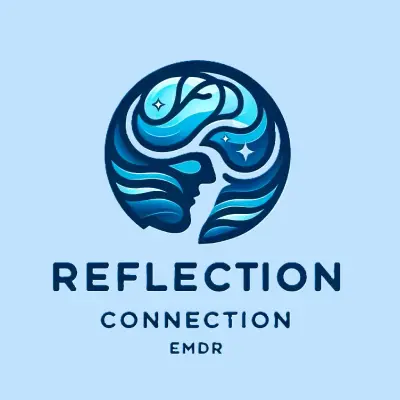Empower Healing With EMDR Therapy
What is EMDR
EMDR (Eye Movement Desensitisation and Reprocessing) is a psychotherapy that enables people to heal from the symptoms and emotional distress that are the result of disturbing life experiences. Repeated studies show that by using EMDR therapy, people can experience the benefits of psychotherapy that once took years to make a difference. It is widely assumed that severe emotional pain requires a long time to heal. EMDR therapy shows that the mind can, in fact, heal from psychological trauma much as the body recovers from physical trauma. When you cut your hand, your body works to close the wound. If a foreign object or repeated injury irritates the wound, it festers and causes pain. Once the block is removed, healing resumes. EMDR therapy demonstrates that a similar sequence of events occurs with mental processes. The brain’s information processing system naturally moves toward mental health. If the system is blocked or imbalanced by the impact of a disturbing event, the emotional wound festers and can cause intense suffering. Once the block is removed, healing resumes. Using the detailed protocols and procedures learned in EMDR therapy training sessions, clinicians help clients activate their natural healing processes.
More than 30 positive controlled outcome studies have been done on EMDR therapy. Some of the studies show that 84%-90% of single-trauma victims no longer have post-traumatic stress disorder after only three 90-minute sessions. Another study, funded by the HMO Kaiser Permanente, found that 100% of the single-trauma victims and 77% of multiple trauma victims were no longer diagnosed with PTSD after only six 50-minute sessions. In another study, 77% of combat veterans were free of PTSD in 12 sessions. There has been so much research on EMDR therapy that it is now recognised as an effective form of treatment for trauma and other disturbing experiences by organisations such as the American Psychiatric Association, the World Health Organisation, and the Department of Defence. Given the worldwide recognition as an effective treatment of trauma, you can easily see how EMDR therapy would be effective in treating the “every day” memories that are the reason people have low self-esteem, feelings of powerlessness, and all the myriad problems that bring them in for therapy.
Over 100,000 clinicians throughout the world use the therapy. Millions of people have been treated successfully over the past 25 years.
We are so made that we can only derive intense enjoyment from a contrast, and only very little from a state of things.
Sigmund Freud
EMDR therapy is an eight-phase treatment. Eye movements (or other bilateral stimulation) are used during one part of the session. After the clinician has determined which memory to target first, he asks the client to hold different aspects of that event or thought in mind and to use his eyes to track the therapist’s hand as it moves back and forth across the client’s field of vision. As this happens, for reasons believed by a Harvard researcher to be connected with the biological mechanisms involved in Rapid Eye Movement (REM) sleep, internal associations arise, and the clients begin to process the memory and disturbing feelings. In successful EMDR therapy, the meaning of painful events is transformed on an emotional level. For instance, a rape victim shifts from feeling horror and self-disgust to holding the firm belief that “I survived it, and I am strong.” Unlike talk therapy, the insights clients gain in EMDR therapy result not so much from clinician interpretation but from the client’s own accelerated intellectual and emotional processes. The net effect is that clients conclude EMDR therapy feeling empowered by the very experiences that once debased them.
Their wounds have not just closed. They have transformed. As a natural outcome of the EMDR therapeutic process, the client’s thoughts, feelings, and behaviour are all robust indicators of emotional health and resolution—all without speaking in detail or doing homework used in other therapies.
Phases of EMDR Therapy
PHASE 1
The first phase is a history-taking session(s). The therapist assesses the client’s readiness and develops a treatment plan. The client and therapist identify possible targets for EMDR processing. These include distressing memories and current situations that cause emotional distress. Other targets may include related incidents in the past. Emphasis is placed on the development of specific skills and behaviours that will be needed by the client in the future situations.
Initial EMDR processing may be directed to childhood events rather than to adult onset stressors or the identified critical incident if the client had a problematic childhood. Clients generally gain insight into their situations, the emotional distress resolves, and they start to change their behaviours. The length of treatment depends upon the number of traumas and the age of PTSD onset. Generally, those with single-event adult onset trauma can be successfully treated in under 5 hours. Multiple trauma victims may require a longer treatment time.
PHASE 2
During the second phase of treatment, the therapist ensures that the client has several different ways of handling emotional distress.
The therapist may teach the client, a variety of imagery and stress reduction techniques the client can use during and between sessions.
A goal of EMDR therapy is to produce rapid and effective change while the client maintains equilibrium during and between sessions.
PHASE 3-6
In phases three to six, a target is identified and processed using EMDR therapy procedures. These involve the client identifying three things:
- The vivid visual image related to the memory
- A negative belief about self
- Related emotions and body sensations
In addition, the client identifies a positive belief. The therapist helps the client rate the positive beliefs as well as the intensity of the negative emotions. After this, the client is instructed to focus on the image, negative thoughts, and body sensations while simultaneously engaging in EMDR processing using sets of bilateral stimulation. These sets may include eye movements, taps, or tones. The type and length of these sets are different for each client. At this point, the EMDR client is instructed to just notice whatever spontaneously happens.
After each set of stimulation, the clinician instructs the client to let his/her mind go blank and to notice whatever thought, feeling, image, memory, or sensation comes to mind. Depending upon the client’s report, the clinician will choose the next focus of attention. These repeated sets with directed, focused attention occur numerous times throughout the session. If the client becomes distressed or has difficulty progressing, the therapist follows established procedures to help the client get back on track.
When the client reports no distress related to the targeted memory (s), he is asked to think of the preferred positive belief that was identified at the beginning of the session. At this time, the client may adjust the positive belief if necessary, and then focus on it during the next set of distressing events.
PHASE 7
In phase seven, closure, the therapist asks the client to keep a log during the week. The log should document any related material that may arise. It serves to remind the client of the self-calming activities that were mastered in phase two.
PHASE 8
The next session begins with phase eight. Phase eight consists of examining the progress made thus far. The EMDR treatment processes all related historical events, current incidents that elicit distress, and future events that will require different responses.
Source - The EMDR Institute Inc - www.emdr.com/what-is-emdr
Other links
EMDR Association of Australia - EMDRAA.org

